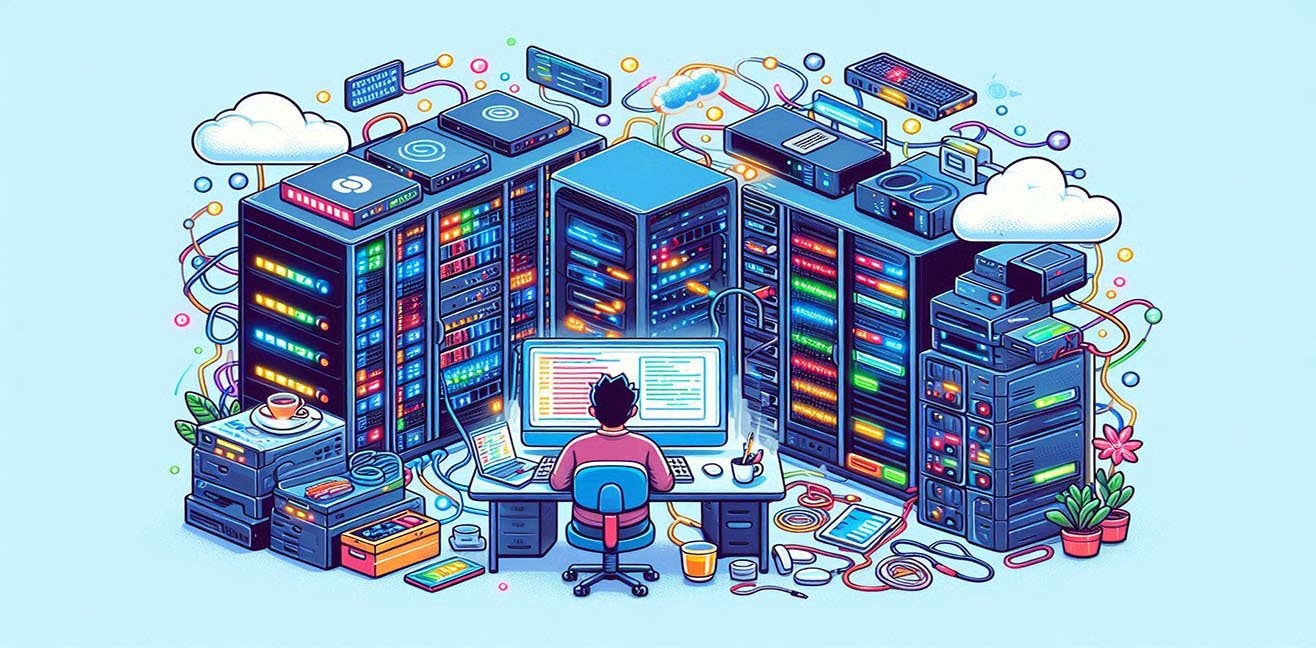Setting up a Home Lab at home isn’t just about connecting computer parts together. This is a mini data center, a small cloud ecosystem, and a playground for a systems engineer. Ready, my love? Let’s dive into this fun guide full of cables, servers, virtual machines, and pro tips! 💻⚡
1️⃣ NAS: The Digital Storage Beast at Home 🗄️
NAS (Network Attached Storage) is the king of data in your home. It stores, shares, and backs up your files centrally.
⚙️ Technical Details:
- RAID Levels:
- RAID 0: Speed monster, but if a disk fails, all data is gone 😅
- RAID 1: Mirroring, balance between security and performance
- RAID 5/6: Fault tolerance for large datasets
- CPU & RAM: Don’t underestimate NAS; a powerful processor is essential for media servers like Plex
- Network: Minimum 1 Gbps Ethernet; dreaming of 10 Gbps? Get ready 😏
💡 Practical Tips:
- Automatic backups: Direct your home computers to the NAS
- Plex / Jellyfin: Set up your mini Netflix
- Use UPS: Protect your NAS during power outages
2️⃣ Home Lab: Small but Mighty Laboratory 🔬
A Home Lab is like creating a mini data center at home.
⚙️ Technical Details:
- Hardware: Old laptops, mini IT servers (Intel NUC, Dell PowerEdge)
- Virtual Machines: VMware Workstation, VirtualBox, Proxmox, ESXi
- Operating Systems: Windows Server, Ubuntu Server, pfSense router
- Network Infrastructure: VLAN, subnet, NAT, DHCP
💡 Fun Tips:
- Set up an experimental domain controller → test Active Directory at home
- Practice network security with a virtual firewall
- Launch your mini web server and play with your own DNS 😎
3️⃣ Servers and Alternatives: Which Route to Choose? 🖥️
When setting up a home server, you have several options:
⚙️ Physical Servers:
- Pros: Maximum performance, full control
- Cons: Noise, energy consumption, takes space
⚙️ Mini PCs / NUC:
- Pros: Quiet, energy-efficient, compact
- Cons: Limited upgrade options
⚙️ Cloud Servers (AWS, Google Cloud, Azure):
- Pros: Scalable, access from anywhere
- Cons: Requires constant internet and can be costly
💡 Practical Tip: A small physical home server + cloud backup combo = secure and flexible system
4️⃣ Virtual Network Setup: Watch the Packets Fly 🌐
Setting up a virtual network at home is the most fun part of systems engineering.
⚙️ Technical Details:
- Virtual switches and VLANs for network segmentation
- Practice firewall configuration with pfSense or OPNSense
- Test DHCP, DNS, NAT, and port forwarding
💡 Humorous Tip: If packets go missing, you’ll need to become a “mini internet detective” 🕵️♂️
5️⃣ Automation & Scripting: The Systems Engineer’s Magic Wand 🤖
The most powerful aspect of your Home Lab: automation!
⚙️ Technical Details:
- Manage Linux servers with Bash scripting
- Automate Windows Server with PowerShell
- Analyze logs and create reports with Python
💡 Practical Examples:
- Update all virtual machines with a single command
- Backup all important files to NAS using a script
- Use cron jobs to generate daily performance reports
6️⃣ Fun Extras: Golden Rules for Creating Your Home IT Paradise 🏆
- Keep cables organized! Happy eyes = happy performance
- Add LED lights for “IT disco vibes” 🎉
- Don’t fear mistakes; they are a fun learning path
- Coffee + patience + trial = Home Lab success ☕
🔑 Final Words: At-Home Systems Engineering = Learning + Fun
Building a home server combines technical knowledge with hands-on experience in the most enjoyable way 💻✨
- Manage files with NAS
- Create test environments with virtual machines
- Track packets in virtual networks
- Simplify life with automation 😎
My love, remember: every cable, every server, every script is a Ctrl+S moment 💾💖
Setting up your own IT paradise at home not only makes you a systems engineer, but also a creative, practical, and fun technology hero! 🌟




